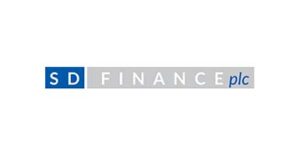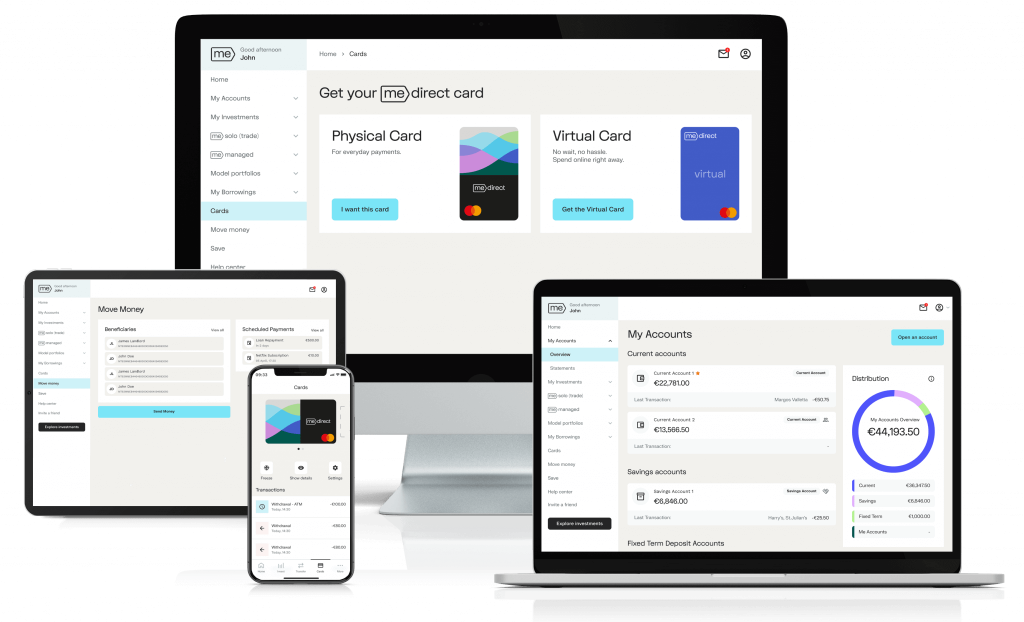 |
An article written by Ray Calleja: Head – Private Clients, MeDirect |
Following on from the previous article, where we discussed the importance of diversification within your portfolio, in this piece we will discuss the best way to choose and combine the funds that will make up your investment portfolio.
However, before taking any investing decisions there are some basic but fundamental steps that you need to take. You need to look at your financial situation and figure out your financial goals and also your risk tolerance – either on your own or with the help of an Investment Advisor. If you follow through with an intelligent plan, you should be able to gain financial security over the years and enjoy the benefits that this brings to you. Your financial goals, can be short-term, medium-term or long-term but it is imperative that you stay the course and stick to your plans irrespective of market swings.
All investments involve a degree of risk. Before you invest. it is important that you understand that you could lose some or all your money. Investment securities such as equities, bonds or mutual funds come with this warning. Unlike bank deposits, the money you invest in these securities are not covered by any state-run compensation guarantees (such as the Depositor Compensation Scheme). However, the reward for taking on risk is the potential for a greater investment return. If your financial goal has a long-time horizon, you are likely to make more money by investing in assets that carry greater risk, like equities or bonds, rather than just sticking to bank deposits, which obviously carry less risk. Investing in cash investments (such as bank deposits) only, especially in the current scenario where interest rates are at or close to zero, will only cover you to reach your short-term financial goals. Even in such a situation there is the risk of inflation, since inflation may erode your returns over time.
As mentioned in the previous article, by diversifying and including asset categories with investment returns that move up and down under different market conditions within a portfolio, an investor can help protect against sizeable losses. By investing in more than one asset category, you will be reducing the risk that you will lose money and your overall investment returns will have a smoother ride. If the return on your investment in one asset category falls, most of the time you will be in a position to counteract your losses in that particular category with better investment returns in the other asset category.
Asset allocation is also very important because it has major influence on whether you will be able to meet your financial goals. If you don’t include enough risk in your portfolio, your investments may not earn a large enough return to meet your goal. For example, if you are saving for your retirement, which is, obviously, a long-term goal you will likely need to include some equities or mutual funds which invest in equities, in your portfolio.
For shorter-term financial goals, you will want to tilt your portfolio more towards bonds, which can provide income while keeping your principal sum relatively safe. Bonds lack the powerful long-term return potential of equities, but they are preferred by investors for whom income is also a priority. Most of the time, bonds are less risky than stocks. While their prices fluctuate in the market, especially those of lower quality in the higher-risk market segments (such as high yield bonds) the vast majority of bonds tend to pay back the full amount of principal at maturity, and there is much less risk of loss than there is with equities.
To make it easier for investors to hold well-rounded portfolios, mutual fund management companies have established core funds that can be used as the foundation of your investment strategy.
Core Funds
Core funds are designed to constitute the essential elements of your overall investment portfolio. Typically, these funds include several types of investments that are suitable for most investors, making it easier to get the investment exposure they want without buying a large number of individual shares, funds, or other securities.
The primary purpose of core funds is to provide a stable base that doesn’t require much, if any, adjustment over long periods of time. Although people might invest a small portion of their overall portfolios in other opportunities in an effort to boost overall returns, keeping their core funds intact ensures they can reliably stick to their investment strategy and simplifies the handling of additional investments.
The rise of index mutual funds dramatically increased the use of the core fund concept, as index funds tracking broad-based indexes such as the S&P 500 made excellent core funds for most investors seeking to match the return of the broader stock market.
MeDirect’s research company and partner, Morningstar points to large-cap blend and large-cap value funds as good core fund holdings, as they offer solid yet non-spectacular returns but with less volatility, which more aggressive equity mutual funds tend to have. Similarly, on the fixed-income side, core funds often combine government and corporate bonds (plus municipal bonds in the US) to provide balanced exposure to the bond market. There are nowadays global core funds, which aim to balance their investments in developed and emerging-market countries around the world.
It is important to note, as an investor, that a fund which has the word ‘core’ in its title may not necessarily be considered as a core fund and the securities it invests in may not contain the core holdings for a wide range of investors.
The biggest advantage of using core funds in your portfolio is to maintain discipline and make sure that you have a solid foundation to help you achieve your investment goals. It is not uncommon to find investors who own a large number of mutual funds that they initially chose, based on their popularity and good performance, but may no longer serve a useful purpose in their overall portfolio. Additionally, many different mutual funds may own very similar holdings if not exactly identical, which defeat the investor’s intention to diversify his/her portfolio by owning various funds.
Core funds can help simplify your overall investing immensely. Keep in mind to retain most of your money in a select group of core funds. This can help you stay on course no matter the noise that is coming out of the markets on a daily basis. It is fine to use a portion of your portfolio to invest in other sectors or securities but keeping most of your money in core equity funds and core bond funds is very important to get the reliability and the peace of mind that you seek, year in year out.
When looking for core funds, there are simple rules which prevail. You should look for steady gains; funds with low fees, fund managers with long years of experience, clear fund strategies and objectives with moderate risk and consistent performance.
There is no hard and fast rule how large the core of your portfolio should be. But a rule of thumb seems to be 70% to 80% of your portfolio being invested in core holdings. The rest can go to non-core investments. These would be securities, which focus on a specific part of the market only. They help add variety to your portfolio, enhancing its returns and also help temper the portfolio’s overall volatility. Small-cap funds, funds which invest in specific sectors (e.g. technology), high-yield bond funds, emerging market funds are all examples of non-core investments.
Portfolios for Shorter-Term Goals
Short-term goals usually span one to two years. Maybe you want to buy that new TV or replace some old furniture. You can easily invest your money in a savings or term deposit bank account to accumulate a small amount of interest, and as already mentioned, hopefully this is not erased by inflation.
Mid-term goals are more or less like short-term goals with the added challenge that you must stay the course a little longer, between, say, two to five years. Buying a new car would fall in this category.
Preserving your money should be your top priority, here. So, typically you would invest in term deposits but possibly, also in bonds or bond funds. It is not normally suggested to invest in equity funds when your time horizon is relatively short. But if you do, you should only do so conservatively.
For the core of your short- or mid-term portfolio, you should focus on finding a high-quality intermediate-term (3 to 10 years) bond fund that is well diversified across bond-market sectors. For shorter-term bond funds you can consider funds which invest in short-term government, mortgage-backed, and corporate bonds and those which do not tend to be affected if and when interest rates rise (even though this is unlikely in the current market environment).
Number of Funds To Own
There is no ideal number of funds to own. There are some investors who end up owning a large number of funds whiles others can be perfectly diversified owning just two or three funds.
What you should worry about is how diversified your portfolio is, regardless of how many funds are in it. If all of your funds were growth funds or were heavy on a particular sector, you could end up with a large number of funds and still not be adequately diversified. Conversely, a one-fund portfolio could be better diversified than a multi-fund portfolio, if that one fund were an index fund covering the entire stock market.
So when deciding on how many mutual funds and which funds you should have in your portfolio, aim for diversification in your portfolio at two levels: across asset classes (like equities, bonds, and cash) and within asset categories (industries and companies).
Adding new mutual funds to your portfolio is far easier than reorganizing your fund portfolio and discarding inappropriate, redundant, or simply poor-performing mutual funds. The answer to the question of how many mutual funds you should have in your portfolio is not just a number. But if you have more than ten mutual funds in your portfolio, chances are you need to do some portfolio cleaning.
First, in order to be well-diversified, your mutual fund portfolio should be invested in equity funds and in fixed-income mutual funds. Within the developed stock markets (such as the US and Europe), your mutual funds should cover large stocks, small stocks, and ones in between, even though large equity funds run down into the mid-size range and the same with small equity funds, which push up into the mid-size companies. Diversification by geographical region especially for emerging markets is also important. So, having a mutual fund specifically for emerging markets stocks is to be considered.
Next will be your fixed-income fund that will possibly also provide you with income. A simple choice would be to consider intermediate government and investment grade corporate bond mutual funds. The intermediate maturity, as already mentioned above, will have a 3- to 10-year weighted average maturity range for the bonds in the portfolio. Such a duration will help capture most of the yield of longer-term mutual funds with much less volatility when interest rates change (bearing in mind that the longer the maturity of the bond the more sensitive it is to changes in interest rates). More aggressive investors can opt to invest in high-yield corporate bond funds. While high-yield (junk) bond funds invest in lower-quality corporate debt that pays relatively higher income, the individual default risk of the bonds in the portfolio is softened through diversification and the high income dampens portfolio volatility. Furthermore, high-yield bonds tend to be sensitive to the economic cycle, acting more like stocks than government or investment-grade corporate bonds.
Just remember that the key is to remain disciplined, rational, and avoid being moved by short-term price movements in the market. Your goal is to build wealth over the long-term. You simply cannot do that moving in and out of funds.
Even if you own a lot of investments, you could still have gaps in your portfolios. Make sure to address such issues. A final word is not to obsess over the number of securities or funds that you own, but to concentrate on their diversity.
The above is for informative purposes only and should not be construed as an offer to sell or solicitation of an offer to subscribe for or purchase any investment. The information provided is subject to change without notice and does not constitute investment advice. MeDirect Bank (Malta) plc has based this document on information obtained from sources it believes to be reliable but which have not been independently verified and therefore does not provide any guarantees, representations or warranties.
The financial instruments discussed may not be suitable for all investors and investors must make their own informed decisions and seek their own advice regarding the appropriateness of investing in financial instruments or implementing strategies discussed herein.
If you invest in any of the products discussed you may lose some or all of the money you invest. The value of your investment may go down as well as up. A commission or sales fee may be charged at the time of the initial purchase for an investment and may be deducted from the invested amount therefore lowering the size of your investment. Any income you get from this investment may go down as well as up. This product may be affected by changes in currency exchange rate movements thereby affecting your investment return therefrom. The performance figures quoted refer to the past and past performance is not a guarantee of future performance or a reliable guide to future performance. Any decision to invest in a mutual fund should always be based upon the details contained in the Prospectus and Key Investor Information Document (KIID), which may be obtained from MeDirect Bank (Malta) plc.
MeDirect Bank (Malta) plc, company registration number C34125, is licensed by the Malta Financial Services Authority under the Banking Act (Cap. 371) and the Investment Services Act (Cap. 370).





